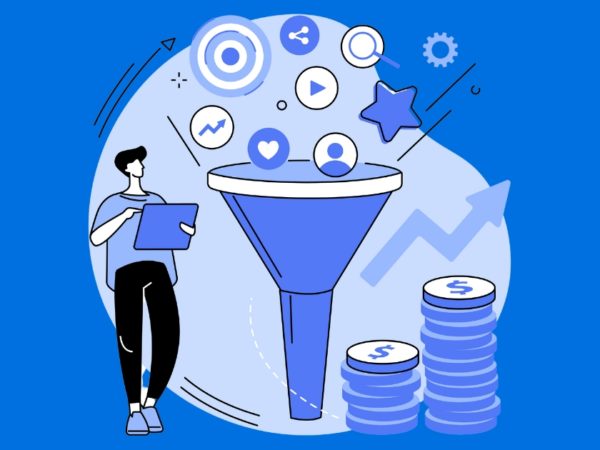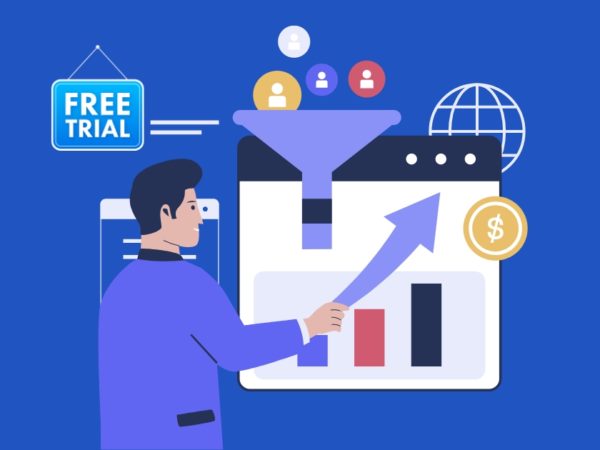Find here the popular first-party data strategies you can use to drive data collection using your website, mobile app, and other digital platforms.
Online advertising and marketing depend largely on user data from websites, mobile apps, online learning content, blogs, eBooks, newsletters, etc. As of now, there are user data collection and management agencies that collect consumer data using cookies.
However, Apple’s iOS allows users to opt out of data tracking, and Google’s plan to stop supporting cookies on its Chrome browser by 2023 will put cookies-based data collection to a stop.
Before something like this happens, you must shift your user data collection strategy to a first-party basis. But how would you set up such a strategy? Well, I answer that below in this concise and easy-to-understand first-party data strategy guide.
What Is First-Party Data?
First-party data means when a user directly shares their information with your business. When someone shares their email address to receive a newsletter or get a discount, it is called first-party data. Here, the data exchange took place directly and with user consent.
Using deep links for app download and visiting a website are also considered first-party data.
Businesses use this data to understand and target their audience consumers with advertising and marketing.
First-Party Data Vs. Second-Party Data Vs. Third-Party Data
There are some basic differences between first-party, second-party, and third-party data. First-party data is the information you collect directly from your audience through their interaction on your website, app, marketing emails, etc. As it comes with user consent, it is of high value with minimal privacy issues.
On the other hand, second-party data gets collected by another non-competitive and reliable company before they share or sell those to your company. Third-party data means the information or data sets collected from multiple external resources before being shared with your company. In this case, you need to be careful about user consent.
Popular First-Party Data Strategies
You need to create a first-party data strategy for your company That should include the plan for collecting and utilizing first-party data collected directly from your audience received consent through your own channels and with their explicit consent. Here are the strategies you can use to collect and monetize first-party data.
Single Sign-On (Google/Facebook Sign-In)
Single sign-on (SSO) is a process that offers a win-win situation for both you and your customers. It lets interested users sign in to your website using their Google or Facebook accounts. It saves the users from filling out lengthy forms for registering on your website.
Instead, they can use their email address or Facebook account to log in quickly. Moreover, it gives you access to the first-party data of that user without causing them annoyance.
Event-Based Tracking
If you want to collect detailed behavioral data about your customers, event-based tracking is a great way to kick-start collecting first-party data. In this process, you collect data about your audience based on the clicks, purchases, cart creation, etc.
To make event-based tracking simple and effortless, you can take help from different analytics tools. Companies can easily implement these tools for event tracking and collect first-party data for their systems.
Surveys and Polls
Everyone loves to take part in surveys and polls on topics that interest them. You can use these techniques to collect first-party data from your customer. If you manufacture beauty products, you can ask your audience to take part in a survey about their skin issues and the ingredients they would prefer in a beauty product.
Besides helping you collect user data, it will help you understand their choices better and allows you to categorize them through their point of concern.
Content Sharing
When your users share engaging content (blogs, photos, podcasts, videos) you have posted, it gives your brand and company exposure to a new audience. Now, you can create viral content for your social channels and inspire users to share them on their accounts or channels.
With a solid content strategy, you can make sure it gets shared by others and allows you to collect even more data about user interactions.
Custom Reviews and Feedback
As a business, you should always ask your customers to share their reviews and feedback on your company on your website or social media. As their share their feedback, you can link those easily to the customer base of your company.
Apart from collecting first-party data, this process helps you discover the drawbacks of the products and services you offer. Thus, you can utilize the reviews to optimize your future and existing products accordingly.
Registering Products of Users or Warranty Services
Do you know that by offering warranties on your products and allowing customers to register their purchased products, you can collect first-party data from them? That’s correct.
These are some effective ways to develop a connection with your new customers and, of course, collect first-party data from them. You can always attach a QR code to your product or its packaging so that they can conveniently get access to your database.
User Profiling
This method goes beyond collecting the basic contact information about a customer and attempts to gather more information such as age, location, organization, industry, profession, company size, etc.
The aim of user profiling is to collect insights that will help you with your marketing and promotion. But you should try to slowly access additional information rather than asking for too much information at the initial stage.
One of the most attractive ways to collect first-party data like email addresses is to offer something useful in exchange, such as eBooks and newsletters. However, collecting the data does not end your responsibility.
You need to allow them to download a useful eBook or resourceful newsletter, so they do not mark your email address as spam. You can also perform customer segmentation at this stage by looking into customers who choose to receive newsletters on different topics.
Use Lead Generation Campaigns
Lead-gen campaign is a useful method to collect first-party data from your customers along with their consent. You can add a pop-up lead-gen form to your website. Nowadays, LinkedIn and Facebook have also become important sources for collecting first-party data through lead-gen ads and promotions.
Best Practices for First-Party Data Collection
For the proper utilization of first-party data and compliance with the data privacy standards, businesses need to make sure they follow the best practices:
#1. Creating a Consent Management Strategy
First-party data collection means having complete responsibility for data consent upon you. So, you need to have a proper consent management strategy in place for your business.
With this, you can make sure to comply with every existing consumer data privacy regulation and, thus, manage the consent, which is becoming more complicated each day.
#2. Choosing a Data Management Platform
Once you collect the customer data, how do your store and manage them? You need to take help from a reliable and powerful customer data platform. These platforms keep your customer data secured and allow them to access the data easily by your marketing and sales team. So, your duty is to choose a data management platform that can let you efficiently manage the first-party data for better ROI.
#3. Assuring Cross-Channel Activation
Now that you have a proper strategy and proficient data management platform, you should be able to categorize, analyze, and model customer data and make them available across channels. For example, both your social media and email marketing teams might need to access the first-party data for different reasons. You can allow both growth-focused teams to help you boost revenue through effective customer data liberation.
#4. Align Business Objectives With Customers’ Objectives
One of the major faults in the data collection strategy of companies is they fail to have a plan that coordinates which data to collect and how to use it. You could overcome this issue by making sure the customer objective getting synced with your business objectives. For that, you need to have measurable goals that can guide you to collect relevant data to achieve your target.
#5. Offer Value by Creating a Transparent Data Usage Policy
As you collect data from your users or potential customers, they need to know how you are using their data. For better transparency, you need to show them that you will behave responsibly with their data. Also, you could provide them with exclusive offers and loyalty programs to make them more interested in sharing their information. You also need to have a strong data governance policy.
Wrapping Up
First-party data collection will help you keep your marketing and advertising strategies alive when third-party data collection reaches its sunset. However, you should not wait until the last moment to create an affordable, robust, and efficient user data collection system using your online properties. Instead, act now by following the first-party data strategies mentioned here.
Now that you collected a lot of user data for targeted advertising and marketing use these best customer data platforms to put user data to good use.



